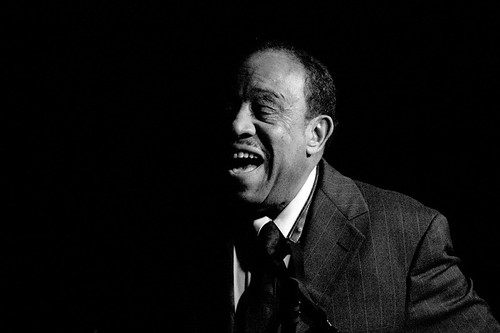
In the vast, sprawling landscape of automotive history, we often celebrate machines that didn’t just move us from one place to another, but fundamentally transformed how we experienced the world. They were more than just transportation; they were a cultural phenomenon, a symbol of an era, a roaring engine of change. Today, we’re not talking about a literal car, but a human dynamo whose journey through music was every bit as revolutionary, as powerfully engineered, and as visually stunning as any iconic vehicle ever designed: the one and only Elvis Presley.
His career wasn’t just a path; it was a highway he forged, laden with the raw power of rock and roll, the precision of country, and the soul of rhythm and blues. This journey wasn’t always smooth; it was marked by daring maneuvers, unexpected turns, and moments of incredible acceleration that left an indelible mark on the cultural fabric of the 20th century. Every stage of his ascent was like an upgrade, a refinement, building on the raw talent of a young man from Mississippi into the undisputed ‘King of Rock and Roll’.
Join us as we take a deep dive into the foundational chapters of Elvis’ extraordinary life, dissecting the key moments that ignited his unparalleled rise. From the dusty roads of Tupelo to the electrifying national airwaves, we’ll explore the ‘design’ of his early sound, the ‘performance’ of his groundbreaking stage presence, and the ‘engineering’ of a career that was destined to redefine music itself. Prepare for a ride through rock and roll history that is as detailed and informative as it is enthusiastic and passionate, truly in the spirit of a MotorTrend journey.
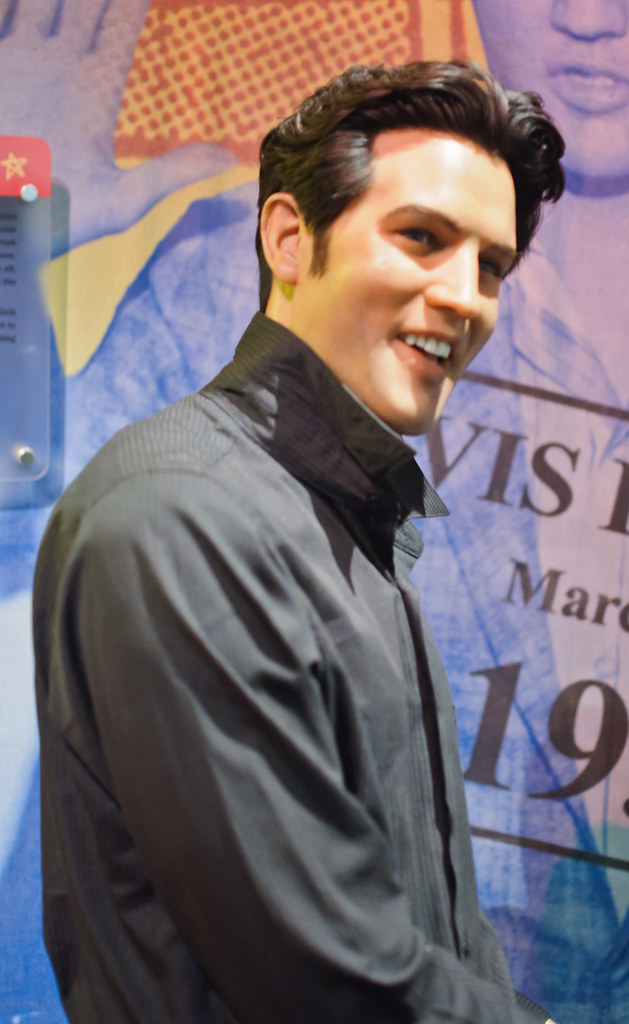
1. **Humble Beginnings: The Tupelo Roots (1935-1953)**Our journey begins in Tupelo, Mississippi, on January 8, 1935, where Elvis Aaron Presley entered the world under modest circumstances. Born to Gladys Love and Vernon Presley, his early life was shaped by poverty and a close-knit family dynamic. His twin, Jesse Garon, was stillborn, cementing a particularly strong bond with his parents, especially his mother.
From these humble beginnings, a lifelong passion for music began to ignite. The family’s attendance at an Assembly of God church provided his initial musical inspiration, immersing him in the sounds that would later influence his unique style. Despite the financial struggles that saw his father move from one odd job to the next and the family relying on neighbors and government assistance, music was a constant.
Even with these early influences, Elvis was initially quite reserved about his musical talents. He received his first guitar for his birthday at age 10, following a singing contest where he recalled placing fifth. He would later recall, “I took the guitar, and I watched people, and I learned to play a little bit. But I would never sing in public. I was very shy about it.” This initial shyness, however, belied the immense stage presence he would later command.
His early education, particularly at Milam for sixth grade and L. C. Humes High School, saw him often teased as a “trashy” kid who played hillbilly music. A music teacher even stated he had “no aptitude for singing.” Yet, these dismissals only fueled his dedication. He devoured music, listening to Hank Snow, Roy Acuff, and Jake Hess, and frequenting record stores with jukeboxes, absorbing every sound. His devotion to regional radio stations playing “race records”—spirituals, blues, and backbeat-heavy rhythm and blues—would prove pivotal in shaping the eclectic sound that became his signature.
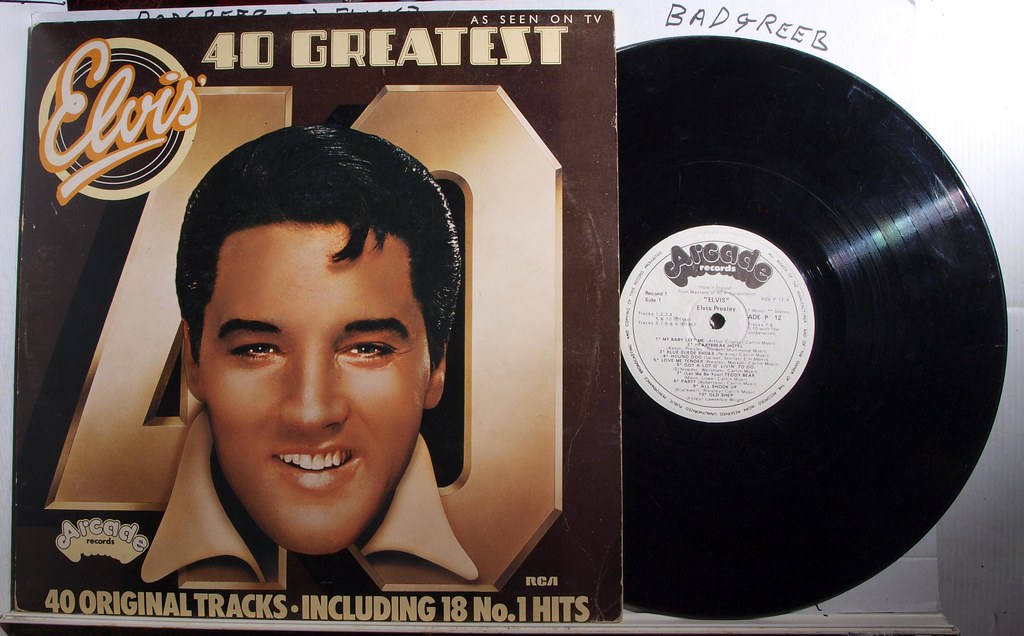
2. **The Sun Records Ignition: Finding His Sound (1953-1954)**By the time he graduated high school in June 1953, Presley had unequivocally singled out music as his future. This conviction led him to Memphis Recording Service, the precursor to Sam Phillips’ legendary Sun Records, marking a critical turning point in his developmental journey. His initial visits in August 1953 and January 1954 were for recording two-sided acetate discs, reportedly as a birthday gift for his mother or simply out of curiosity to hear his own voice. However, biographer Peter Guralnick posits that Presley harbored a deeper ambition: the hope of being discovered.
Sam Phillips, a visionary producer, was on a relentless quest for a sound that could bridge racial divides, someone who could introduce the vibrant energy of black musicians to a broader, white audience. His studio was a crucible where musical genres melded, but finding the right voice was paramount. While Presley’s early attempts at recording a ballad, “Without You,” didn’t quite hit the mark for Phillips, the producer recognized an undeniable spark in the young singer.
This led to a fateful invitation: Phillips asked Presley to sing other numbers and, sufficiently impressed, brought in two local musicians—guitarist Winfield “Scotty” Moore and upright bass player Bill Black—to work with him. The initial recording session on the evening of July 5, 1954, was largely unproductive, teetering on the brink of failure. It was in that moment of near-despair that the true ignition occurred.
As the musicians were preparing to call it a night, Presley spontaneously launched into a 1946 blues number, Arthur Crudup’s “That’s All Right.” Scotty Moore vividly recalled the moment: “All of a sudden, Elvis just started singing this song, jumping around and acting the fool, and then Bill picked up his bass, and he started acting the fool, too, and I started playing with them.” This uninhibited, raw energy was precisely the sound Phillips had been looking for, a perfect blend of spontaneity and undeniable charisma.
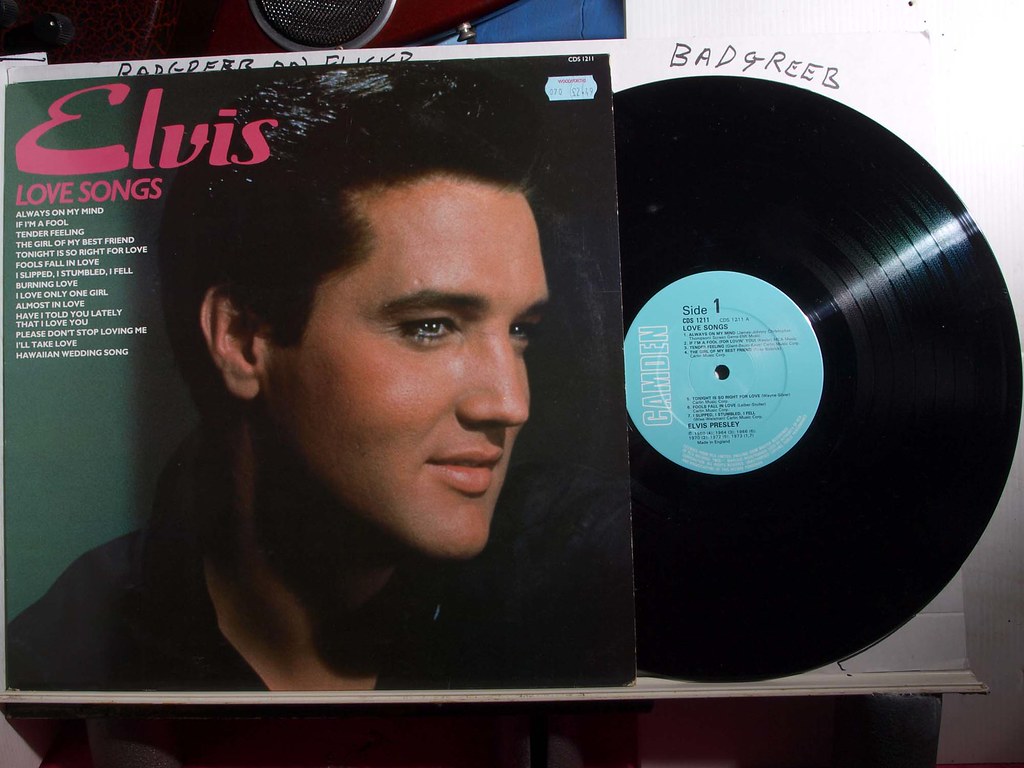
3. **The Birth of Rockabilly: Scotty, Bill, and Phillips’ Vision (1954)**The impromptu recording of “That’s All Right” wasn’t just a moment of spontaneous combustion; it was the genesis of a new musical genre. Phillips immediately began taping, capturing the raw, electrifying fusion that would soon be dubbed ‘rockabilly’. What Presley achieved with “That’s All Right” was transformative, turning a “lament for a lost love into a satisfied declaration of independence,” as described by critics. His unique vocal character, combined with his choice to make the guitar the lead instrument, reshaped the song’s very essence.
Just three days after that pivotal session, Memphis disc jockey Dewey Phillips unleashed “That’s All Right” on his Red, Hot, and Blue show. The reaction was immediate and overwhelming. Listener interest was so intense that Phillips played the record repeatedly for the remaining two hours of his program. The buzz was undeniable, with many callers initially assuming the singer was black, prompting Dewey Phillips to interview Presley on-air to clarify his high school attendance and, by extension, his racial identity.
This early success prompted further experimentation. In the days following, the trio returned to the studio to record a bluegrass song, Bill Monroe’s “Blue Moon of Kentucky.” Again, Presley imbued it with his distinctive style, utilizing a jury-rigged echo effect that Sam Phillips ingeniously dubbed “slapback.” The blend of these two seemingly disparate genres—country and rhythm and blues—was revolutionary.
The resultant single, with “That’s All Right” on the A-side and “Blue Moon of Kentucky” on the reverse, presented a sound that defied easy categorization. As one Memphis journalist described, some songs were in the “R&B idiom of negro field jazz,” while others were “more in the country field,” yet both shared “a curious blending of the two different musics.” This innovative fusion, challenging established radio formats and cultural norms, officially ushered in the era of rockabilly, with Presley at its forefront.
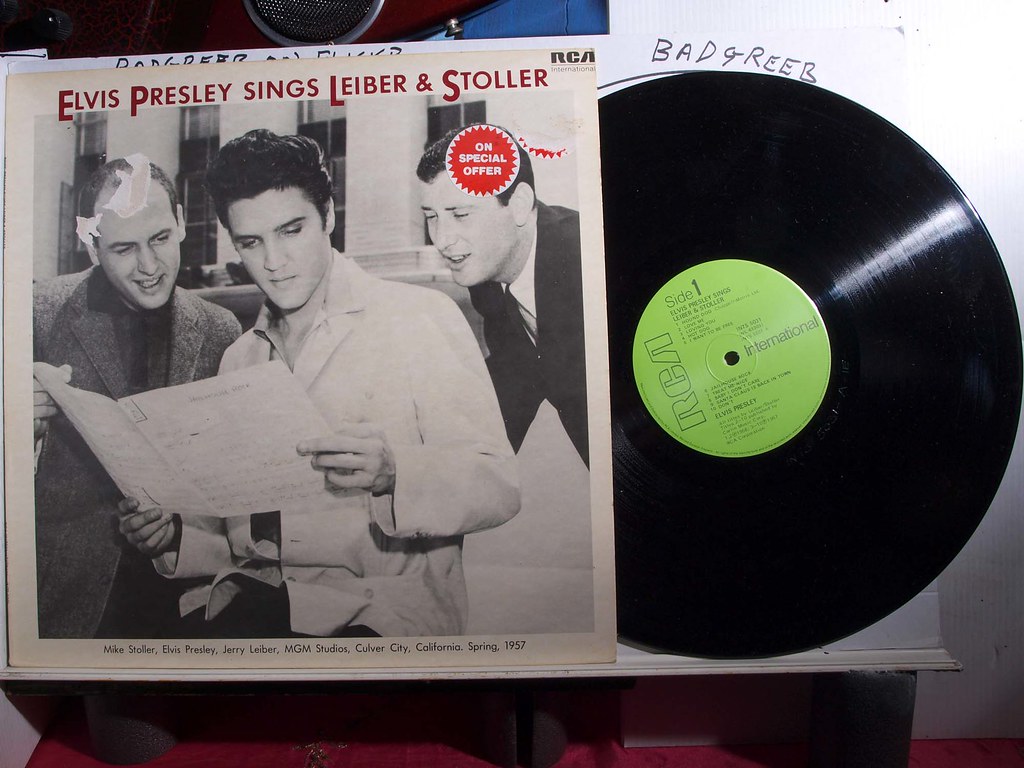
4. **Conquering the Stage: Early Live Performances and the “Rubber Legs” (1954)**With the electrifying sound of rockabilly now captured on wax, the next crucial phase of Elvis’ ascent was to bring that raw energy to a live audience. The trio made their public debut at the Bon Air club on July 17, 1954, a performance that hinted at the seismic shifts to come. Later that month, they played at the Overton Park Shell, an event headlined by Slim Whitman, where Presley would unveil a movement that would become his signature.
It was at the Overton Park Shell that Elvis pioneered his now-legendary “Rubber Legs” dance movement. This was a direct, visceral response to the rhythm, amplified by a touch of nervousness that manifested in his shaking legs as he performed. His wide-cut pants of the era only emphasized these movements, triggering an unprecedented reaction from the young women in the audience, who erupted into screams. It was pure, unadulterated performance power.
Scotty Moore, ever the keen observer, recalled the dynamic: “During the instrumental parts, he would back off from the mic and be playing and shaking, and the crowd would just go wild.” This wasn’t merely dancing; it was a physical manifestation of the music, a kinetic energy that resonated deeply with the burgeoning youth culture. It was clear that Presley wasn’t just singing; he was performing with his entire being, connecting with his audience on a primal level.
Soon after, Moore and Black fully committed, leaving their previous band to play with Presley regularly, and disc jockey/promoter Bob Neal stepped in as the trio’s manager. They honed their craft with frequent gigs at the Eagle’s Nest club in Memphis. Presley’s confidence soared with each performance, as Moore noted, “His movement was a natural thing, but he was also very conscious of what got a reaction. He’d do something one time and then he would expand on it real quick.” This meticulous attention to audience engagement, combined with his natural flair, transformed him into an unstoppable live force.
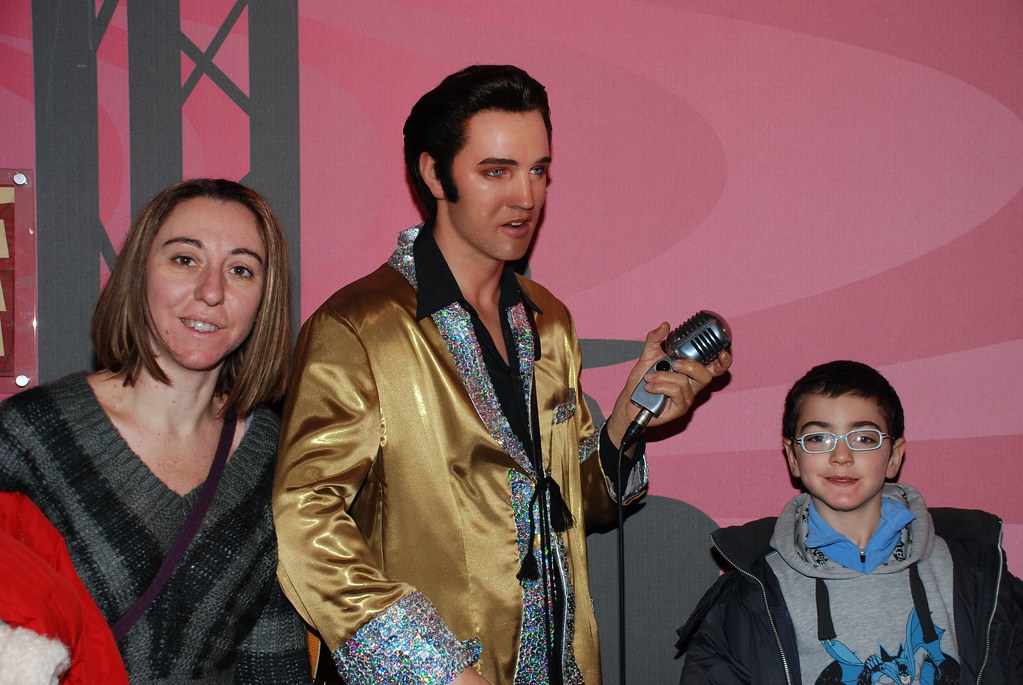
5. **From Regional Star to National Prominence: Louisiana Hayride and Colonel Parker’s Arrival (1954-1955)**
The burgeoning regional fame of Elvis Presley found a significant platform in November 1954, when he performed on the Louisiana Hayride. This show, the Grand Ole Opry’s more adventurous rival, broadcast to an astounding 198 radio stations across 28 states, offering a vastly expanded reach. His initial, nervous set garnered a muted response, but a more composed and energetic second set sparked an enthusiastic reaction that secured him a year’s worth of Saturday-night appearances. This regular exposure was a crucial component in expanding his fan base beyond Memphis.
As his reputation grew, so did his equipment; trading in his old guitar for $8, he invested in a Martin instrument for $175 (equivalent to $2,000 in 2024), a testament to his increasing commitment to his craft. The trio began playing in new locales, from Houston, Texas, to Texarkana, Arkansas, broadening their geographic footprint. His first television appearance came via the KSLA-TV broadcast of Louisiana Hayride, an early foray into a medium that would soon catapult him to national celebrity. By early 1955, the combination of Hayride appearances, relentless touring, and well-received record releases firmly established him as a regional star, a vehicle gaining serious traction.
This rising trajectory caught the attention of Colonel Tom Parker, whom manager Bob Neal considered the best promoter in the music business. Parker, known for successfully managing top country stars like Eddy Arnold and Hank Snow, recognized Presley’s immense potential. In January 1955, Neal brought Presley to Parker’s attention, leading to Parker booking Presley on Snow’s February tour. This strategic move placed Elvis in front of even larger audiences, effectively test-driving his unique sound in diverse markets.
By August, Sun Records had released 10 sides credited to “Elvis Presley, Scotty and Bill,” now augmented by a drummer. The blend of “R&B idiom of negro field jazz” and “country field” music, as described by a Memphis journalist, made it challenging for radio airplay. “Many country-music disc jockeys would not play it because Presley sounded too much like a black artist and none of the R&B stations would touch him because ‘he sounded too much like a hillbilly’,” Neal recalled. This very difficulty, however, underscored the revolutionary nature of his “rockabilly” sound, a genre that defied conventional programming but captivated a generation.
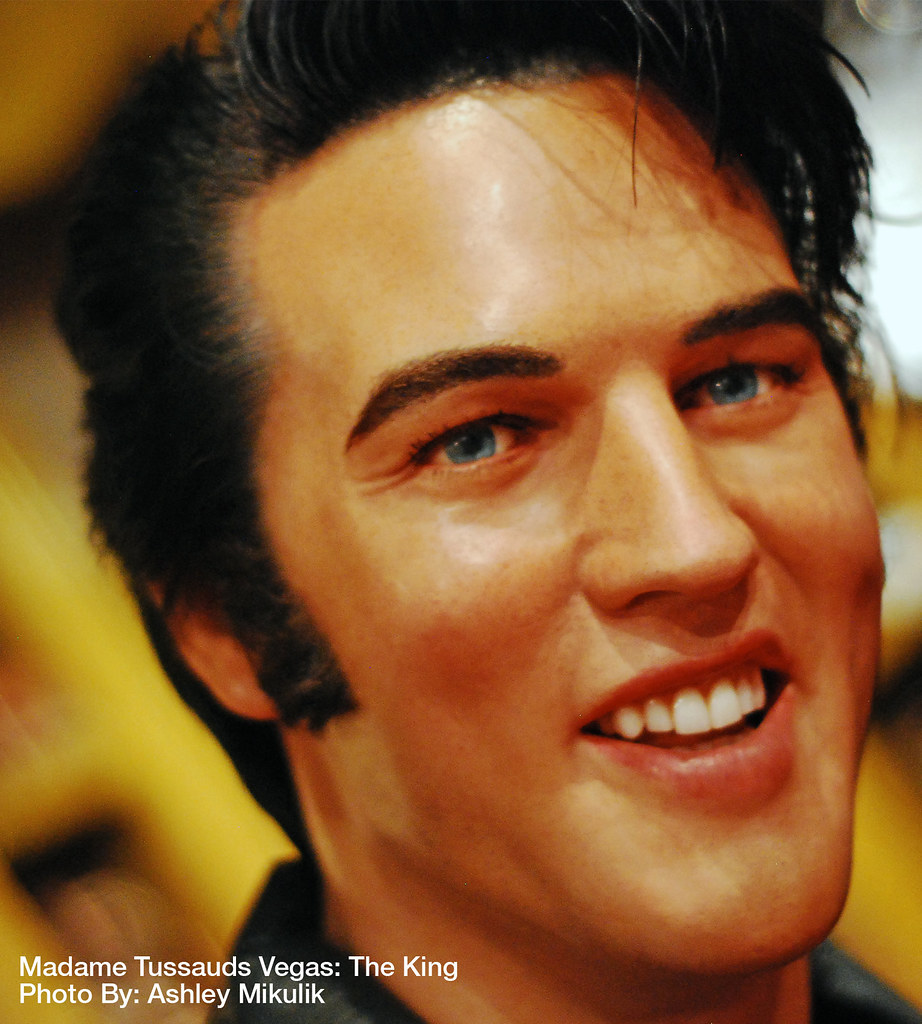
6. **The RCA Victor Deal: A Game-Changing Acquisition (Late 1955)**The year 1955 was a period of relentless touring and increasing popularity, but it was the landmark deal with RCA Victor in November that truly set the stage for Elvis Presley’s national and international dominance. At the Country Disc Jockey Convention in early November, Presley was recognized as the year’s most promising male artist, signaling that his unique blend of sounds was no longer just a regional phenomenon but a force to be reckoned with.
With three major labels vying for his contract, offering bids up to $25,000, the stakes were incredibly high. Colonel Tom Parker, acting as Presley’s special adviser, and Sam Phillips of Sun Records, negotiated a groundbreaking agreement with RCA Victor on November 21. RCA acquired Presley’s Sun contract for an unprecedented $40,000, a sum that underscored their belief in his boundless potential. At just 20 years old, Presley was legally a minor, so his father, Vernon, signed the contract, marking the formal transition of Elvis from a regional sensation to a national priority for one of the largest record companies in the industry.
Beyond the recording contract, Parker also orchestrated a clever publishing deal with Jean and Julian Aberbach of Hill & Range Publishing. This resulted in the creation of two new entities: Elvis Presley Music and Gladys Music. This strategic move ensured that a significant portion of royalties from any new material recorded by Presley would flow back to these companies, with songwriters agreeing to forgo one-third of their customary royalties for the immense benefit of having their compositions performed by the rapidly rising star. It was a shrewd business decision that perfectly complemented his artistic trajectory.
By December, RCA Victor had wasted no time in initiating a massive promotional campaign for their new artist. They promptly reissued many of his Sun recordings, ensuring that his existing work reached an even wider audience. This aggressive marketing, combined with the groundbreaking contract and innovative publishing arrangements, laid the groundwork for an explosive 1956, transforming Elvis’ powerful engine into a nationwide vehicle of sound and cultural change. The era of the ‘King’ was about to begin in earnest.
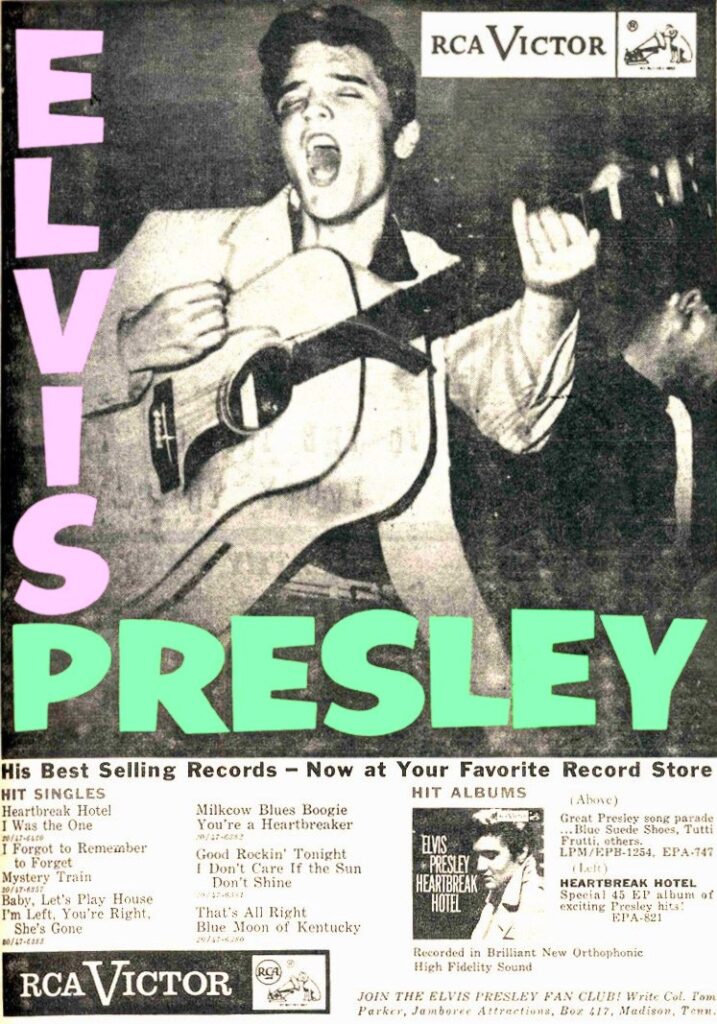
7. **”Heartbreak Hotel” and the National Breakthrough (Early 1956)**The dawn of 1956 heralded the true commercial breakout for Elvis Presley. On January 10, he stepped into the RCA Victor studios in Nashville to make his first recordings for the label. This session was a blend of his established sound and new strategic additions. His customary backup of Scotty Moore, Bill Black, and D.J. Fontana was augmented by Hayride pianist Floyd Cramer, alongside seasoned guitarist Chet Atkins and three background singers, including Gordon Stoker of the popular Jordanaires quartet. This expanded lineup provided a richer, more polished sound without sacrificing the raw energy that defined him.
The session’s most significant output was the moody, evocative ballad “Heartbreak Hotel.” Released as a single on January 27, it was an instant sensation. Colonel Parker, ever the master promoter, had already secured a crucial platform: six appearances on CBS’ Stage Show over two months. Produced in New York City and hosted by big band leaders Tommy and Jimmy Dorsey, these national television spots were instrumental in introducing Elvis to millions beyond his established fan base. His debut on January 28 was a game-changer, revealing his magnetic stage presence to a vast, eager audience.
Following his initial Stage Show appearance, Presley remained in New York to record at RCA Victor’s studio there. These sessions further diversified his catalogue, yielding eight new songs, including a cover of Carl Perkins’ rockabilly anthem “Blue Suede Shoes.” This period marked a relentless pace of recording and performing, cementing his reputation as a dynamic and prolific artist. His sound was evolving, showcasing a versatility that allowed him to traverse genres, yet always with his unmistakable vocal imprint.
February brought another milestone: Presley’s Sun recording, “I Forgot to Remember to Forget,” which had been reissued by RCA, ascended to the top of the Billboard country chart, demonstrating his enduring appeal in that genre. Concurrently, Bob Neal’s management contract was formally terminated, solidifying Colonel Parker’s position as Presley’s sole manager. With “Heartbreak Hotel” rapidly climbing the pop charts, hitting number one within twelve weeks of its release, Elvis Presley was no longer just a regional star or a promising artist; he was a national phenomenon, his musical vehicle accelerating at an astonishing speed, poised to dominate the airwaves and redefine popular culture. His ‘guitar car’ was now a high-performance machine, breaking every record in its path.
Welcome back to our exhilarating journey through the life of Elvis Presley, the undisputed ‘King of Rock and Roll’. Having charted his electrifying initial ascent, from his humble beginnings to his national breakthrough with “Heartbreak Hotel,” we now shift gears to explore the next monumental phase of his career. This segment delves into how Elvis solidified his crown, navigating intense controversy, the glittering world of Hollywood, and the unexpected turn of military service, all of which ultimately cemented his global legacy. It’s a testament to his enduring power and adaptability, a true masterclass in maintaining peak performance even when the road ahead was unpredictable.
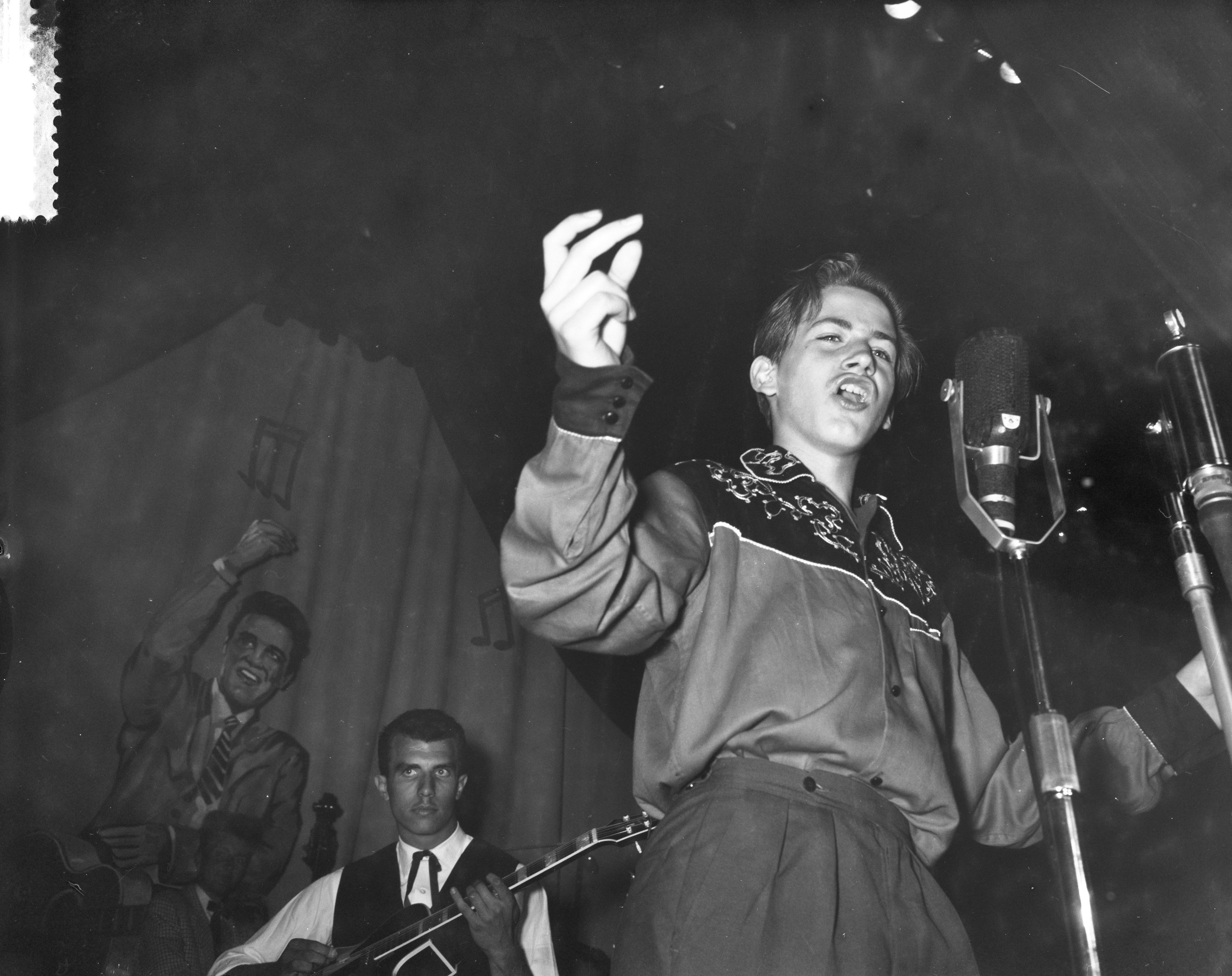
8. **First National TV Appearances and Debut Album (1956)**This was the year Elvis truly hit the open road, accelerating past regional fame to become a national force. His first recordings for RCA Victor in Nashville on January 10, 1956, were a calculated engineering marvel, blending his established raw sound with strategic new components. The core of Scotty Moore, Bill Black, and D.J. Fontana was now complemented by Hayride pianist Floyd Cramer, seasoned guitarist Chet Atkins, and background singers including Gordon Stoker of the Jordanaires quartet, giving his music a richer, more polished sonic chassis.
The most monumental output from this session was “Heartbreak Hotel,” a moody ballad that was released as a single on January 27. Colonel Parker, ever the master strategist and promoter, had already secured a prime launchpad: six appearances on CBS’ Stage Show over two months. These national television spots, produced in New York City and hosted by the Dorsey brothers, were the equivalent of a national commercial campaign, introducing Elvis’ magnetic stage presence to millions who had never before witnessed his electrifying ‘performance engine’. His debut on January 28 was an absolute game-changer, putting his unique vehicle on a vast, eager new highway.
Following this initial television triumph, Presley remained in New York to cut more tracks at RCA Victor’s studio. These sessions were vital in diversifying his musical arsenal, yielding eight new songs, including a cover of Carl Perkins’ iconic rockabilly anthem “Blue Suede Shoes.” This period showcased a relentless drive, a high-octane pace of recording and performing that solidified his reputation as a dynamic and prolific artist, constantly upgrading his sound. His vehicle was not just fast; it was versatile, capable of traversing various musical terrains.
The commercial acceleration was undeniable. By February, his Sun recording, “I Forgot to Remember to Forget,” reissued by RCA, had already topped the Billboard country chart, proving his enduring power in that genre. Simultaneously, Bob Neal’s management contract was gracefully retired, firmly seating Colonel Parker in the driver’s seat as Presley’s sole manager. With “Heartbreak Hotel” swiftly conquering the pop charts and hitting number one within twelve weeks, Elvis Presley was no longer a promising prototype; he was a fully realized, high-performance machine, poised to redefine popular culture.
RCA Victor didn’t just stop there. On March 23, they unleashed Presley’s self-titled debut album. This was a masterclass in presentation, a dynamic fusion of five previously unreleased Sun recordings with seven new tracks. It boldly featured two country songs, a bouncy pop tune, and, crucially, three R&B numbers that were staples of his live show, including his distinctive interpretation of “Blue Suede Shoes.” This album, which became the first rock and roll album to top the Billboard chart, was a monumental statement. Its iconic cover, capturing Elvis mid-performance with guitar in hand, wasn’t just an image; it was a visual blueprint, cementing the guitar as the definitive instrument capturing the very essence and spirit of this exhilarating new musical movement.
Read more about: Talk About a Plot Twist! These 15 Famous Faces Said Goodbye on Their Own Birthdays!
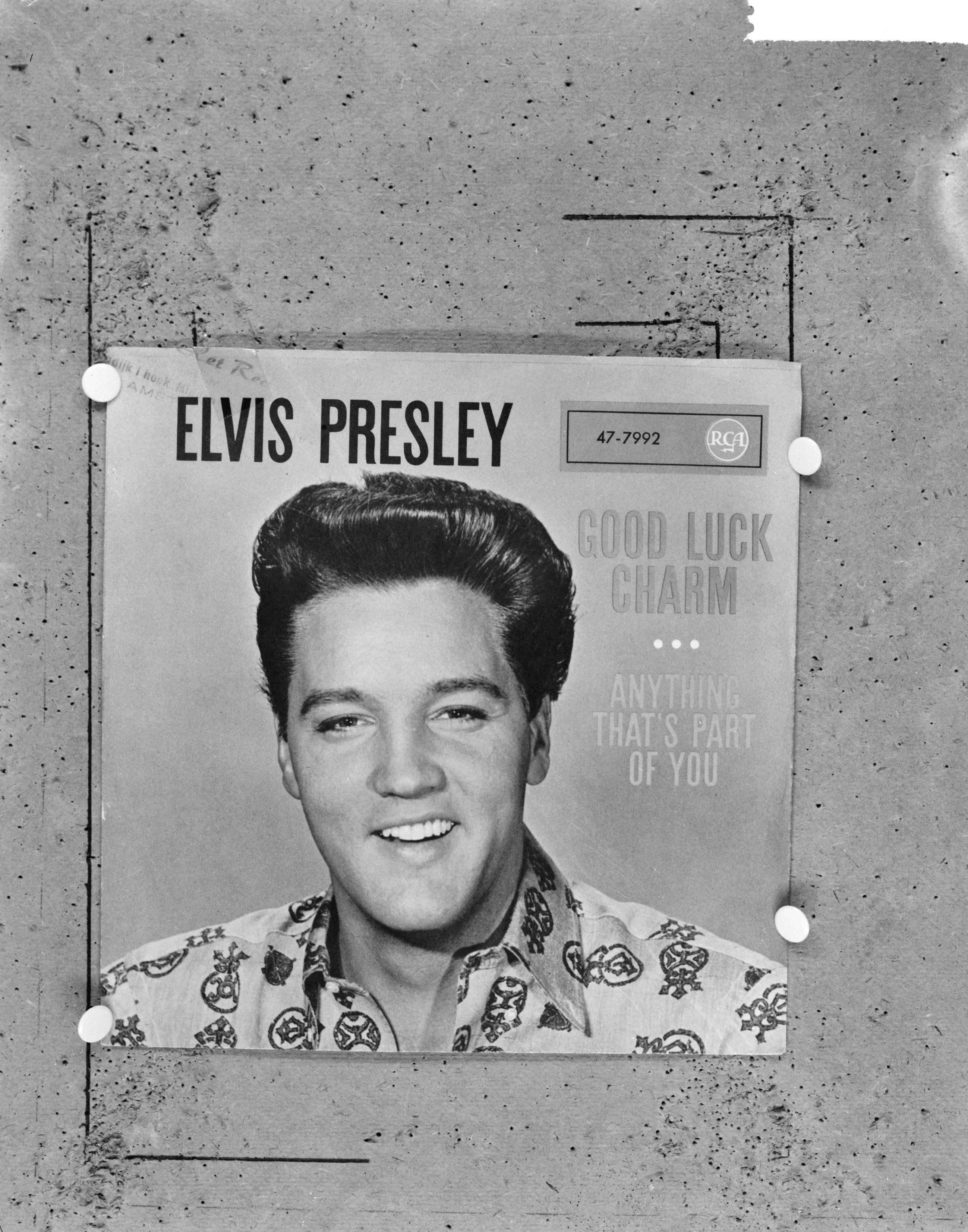
9. **The Milton Berle Show Controversy and “Hound Dog” (June 1956)**As Elvis’s star power rocketed, his unconventional ‘performance design’ began to provoke a strong reaction, particularly from conservative quarters. On April 3, Presley made his initial splash on NBC’s The Milton Berle Show, performing on the USS Hancock, where his energy elicited cheers and screams. This set the stage for a dramatic second appearance on June 5 at NBC’s Hollywood studio, a moment that would forever be etched in the annals of television history, an event that was almost like a controlled demolition of societal norms.
Milton Berle, perhaps subtly attempting to rein in the wild energy, persuaded Presley to perform without his guitar, stripping away a familiar comfort. What followed was an abrupt, uninhibited moment where Presley halted an up-tempo rendition of “Hound Dog” and launched into a slower, grinding version. This performance was accentuated by exaggerated body movements, a visceral, unbridled expression of the music that shattered established decorum. It was a raw display of kinetic energy, the kind that ignites passion in some and outrage in others.
His gyrations ignited a firestorm of controversy. Jack Gould of The New York Times famously critiqued his “no discernible singing ability” and described his movements as “primarily identified with the repertoire of the blond bombshells of the burlesque runway.” Ben Gross of the New York Daily News went further, declaring popular music had “reached its lowest depths” in Presley’s “grunt and groin” antics, suggesting it was “suggestive and vulgar, tinged with the kind of animalism that should be confined to dives and bordellos.” The moral compass of the nation was spinning.
Even Ed Sullivan, whose variety show was the pinnacle of family entertainment, initially branded Presley “unfit for family viewing.” To Elvis’s personal displeasure, he soon found himself inescapably branded “Elvis the Pelvis,” a nickname he dismissed as “childish.” This controversial performance, far from derailing his career, paradoxically supercharged his rebellious image, cementing his status as a cultural icon who fearlessly pushed boundaries, a high-performance vehicle designed for shock and awe.
Amidst this maelstrom, Presley had also begun a two-week residency at the New Frontier Hotel and Casino on the Las Vegas Strip, a venue that proved to be a mismatch for his youthful, rebellious energy, receiving poor reviews from the conservative, middle-aged clientele. It was in Vegas, however, that he was captivated by Freddie Bell and the Bellboys’ cover of “Hound Dog,” a song that would quickly become his new closing number and a pivotal part of his controversial repertoire. This observation, coupled with his new Paramount Pictures contract, showcased his relentless pursuit of new ‘avenues’ for his burgeoning talent.
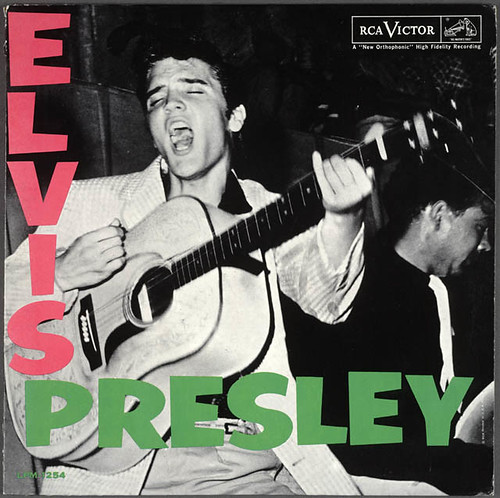
10. **The Steve Allen Show and First Sullivan Appearance (July-Sept 1956)**The public outcry from the Berle appearance set the stage for a pivotal moment in Presley’s media navigation. Booked for a July 1 appearance on NBC’s The Steve Allen Show in New York, Allen, a self-proclaimed non-fan of rock and roll, orchestrated an attempt to defuse Presley’s controversial image. He introduced a “new Elvis,” presenting him in a white bowtie and black tails, essentially trying to put a tame ‘body kit’ on a wild machine.
In a scene now legendary, Presley sang “Hound Dog” for less than a minute, not to his usual screaming fans, but to a basset hound adorned with a top hat and bowtie. Television historian Jake Austen aptly described Allen’s intent: “Allen thought Presley was talentless and absurd… [he] set things up so that Presley would show his contrition.” Presley himself found it the “most ridiculous performance of his career,” a public compliance he agreed to for the sake of television’s reach, despite his desire to remain true to himself.
Yet, Elvis’s authentic ‘engine’ could not be truly contained. Just days later, back in Memphis for an outdoor concert, he defiantly declared, “You know, those people in New York are not gonna change me none. I’m gonna show you what the real Elvis is like tonight.” This was Elvis reconnecting with his core, revving up his true performance for his dedicated fans. An order from a Jacksonville, Florida judge to tame his act saw him largely still, except for a suggestive wiggle of his little finger, a subtle yet powerful act of defiance.
The musical output from this period was equally explosive. The very next day after the Allen show, he recorded new versions of “Hound Dog,” “Any Way You Want Me,” and “Don’t Be Cruel,” with The Jordanaires adding their harmonies. The single pairing “Don’t Be Cruel” with “Hound Dog” proved unstoppable, dominating the top of the charts for an astounding eleven weeks, a record that would stand for 36 years. This demonstrated that despite the media attempts to control his image, his music and raw appeal were an unstoppable force, a well-tuned machine roaring down the highway.
The unprecedented success of Allen’s show, which for the first time beat The Ed Sullivan Show in ratings, finally convinced Sullivan to book Presley for three appearances at an unprecedented $50,000 fee. His debut on September 9, 1956, hosted by Charles Laughton, was watched by approximately 60 million viewers – a staggering 82.6 percent of the television audience. Despite legendary claims that Presley was shot only from the waist up (a tactic Sullivan initially considered), he was shown head-to-toe. The camerawork was discreet, but the studio audience erupted in screams, especially during his performance of the forthcoming ballad, “Love Me Tender.” This performance alone triggered a record-shattering million advance orders for the single, solidifying his status as a national celebrity and marking the ultimate launch of his incredible career trajectory.

11. **Crazed Crowds, Second Album, and Film Debut (Late 1956)**As 1956 roared on, the ‘horsepower’ of Elvis’s live performances continued to escalate, creating an almost unmanageable fervor among his audiences. Scotty Moore perfectly encapsulated the phenomenon: “He’d start out, ‘You ain’t nothin’ but a Hound Dog,’ and they’d just go to pieces. They’d always react the same way. There’d be a riot every time.” This wasn’t merely enthusiasm; it was a volcanic eruption of collective excitement, akin to a supercharged engine shaking its very chassis.
The intensity reached such a peak that at two concerts he performed in September at the Mississippi–Alabama Fair and Dairy Show, a full fifty National Guardsmen had to be deployed alongside the police to maintain order and prevent a complete ruckus. It was clear that Elvis Presley wasn’t just a performer; he was a cultural force, a lightning rod for the burgeoning youth movement, and his live shows were the epicenters of this generational shift.
In October, RCA Victor released his second album, simply titled *Elvis*, which quickly ascended to the number one spot, mirroring the success of its predecessor. This album was a treasure trove of his evolving artistry, notably including “Old Shep,” a song he’d sung at a talent show back in 1945, and which marked his first time playing piano on an RCA Victor session. The raw emotion over technical precision, as described by Guralnick, showcased a deeper, more personal aspect of his musical ‘engineering.’
Rock critic Dave Marsh, in assessing the profound musical and cultural impact of Elvis’s recordings from “That’s All Right” through *Elvis*, asserted that “these records, more than any others, contain the seeds of what rock & roll was, has been and most likely what it may foreseeably become.” This period was the definitive blueprint for the future of popular music, a relentless production line of chart-topping hits that redefined the soundscape.
Elvis’s cultural penetration extended into the realm of film with his debut in *Love Me Tender*, released on November 21. Originally titled *The Reno Brothers*, the name was strategically changed to capitalize on his latest number-one record, “Love Me Tender,” which had hit the charts earlier that month. Although initially a straight acting role, four musical numbers were cleverly integrated to further leverage his unparalleled popularity. Despite being panned by critics, the film was a massive box office success, proving that his ‘brand’ was now a major cinematic draw, ensuring he would receive top billing on every subsequent film, a true testament to his magnetic appeal.
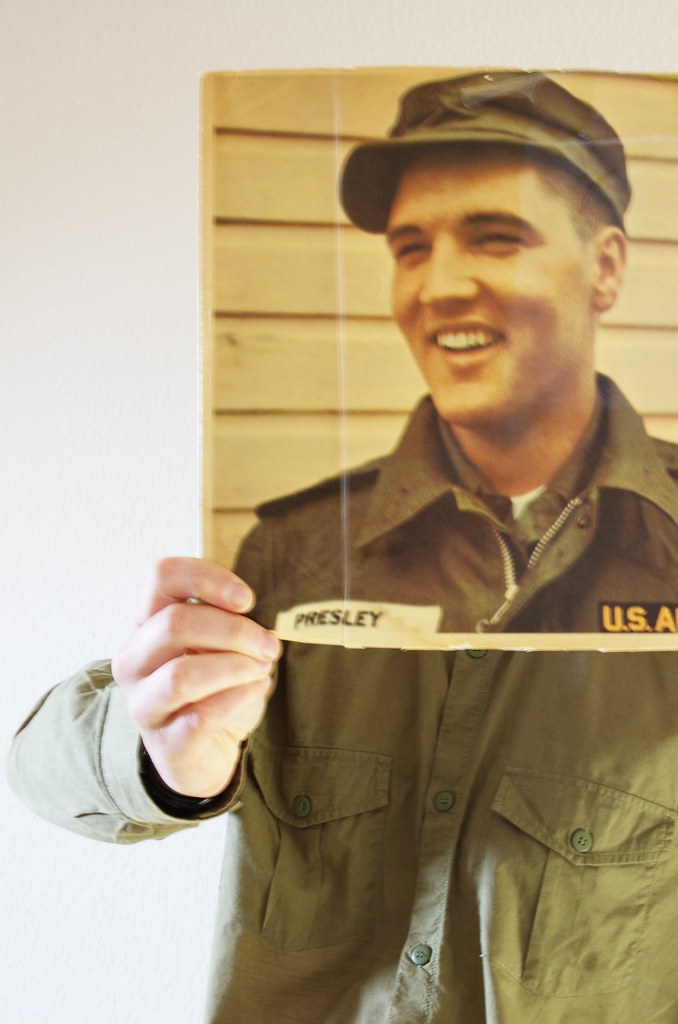
12. **”Million Dollar Quartet,” Leiber & Stoller, and Draft Notice (Late 1956 – Early 1958)**The momentum of Elvis’s career showed no signs of slowing as 1956 drew to a close. A truly legendary, impromptu jam session occurred on December 4 at Sun Records, where Carl Perkins and Jerry Lee Lewis were recording. Elvis, along with Johnny Cash, unexpectedly dropped in, creating what would become known as the “Million Dollar Quartet” recordings. Though Sam Phillips no longer held the rights to release Presley’s material, he wisely ensured the session was taped, capturing a rare moment of rock and roll royalty, a spontaneous ‘supercar’ meeting.
The scale of Elvis’s commercial engine was highlighted by a front-page story in The Wall Street Journal, which reported that his merchandise alone had generated an astounding $22 million, in addition to his record sales. Billboard declared him the artist with the most songs in the top 100 since charting began, and in his first full year with RCA Victor, the industry’s largest company, Elvis accounted for over fifty percent of their singles sales. His impact was not just artistic; it was an economic phenomenon, a true powerhouse driving the entire industry.
As 1957 dawned, Elvis made his third and final appearance on The Ed Sullivan Show on January 6. This time, the cameras *did* famously shoot him only from the waist down, a move some speculate was orchestrated by Colonel Parker for maximum publicity. Regardless, Elvis, as critic Greil Marcus noted, refused to be constrained, appearing in “the outlandish costume of a pasha,” exuding an overwhelmingly ual charisma. He concluded with a poignant black spiritual, “Peace in the Valley,” defying Sullivan’s wishes and displaying his profound range. Sullivan, in a remarkable shift, declared him “a real decent, fine boy.”
Just two days later, on his 22nd birthday, the Memphis draft board announced his 1-A classification, meaning military service was on the horizon. Despite this impending ‘pit stop,’ his creative output remained relentless. Three singles released in the first half of 1957—”Too Much,” “All Shook Up,” and “(Let Me Be Your) Teddy Bear”—all sped to number one, showcasing his unstoppable momentum. His international appeal was so vast that in Leningrad, X-ray plate pressings of his music commanded high prices, a testament to his global ‘broadcast range’ even without official releases.
On March 19, 1957, Elvis purchased his iconic 18-room mansion, Graceland, marking a new milestone in his personal journey. Musically, he recorded the soundtrack for his second film, *Loving You*, which became his third straight number-one album. This period also saw the crucial collaboration with Jerry Leiber and Mike Stoller, who wrote the title track and four songs for his next film, *Jailhouse Rock*. They effectively produced these sessions, becoming his “good-luck charm,” marveling at his quick grasp of any demo. The title track, “Jailhouse Rock,” itself became another number-one hit, an undeniable ‘performance upgrade’ in his repertoire.
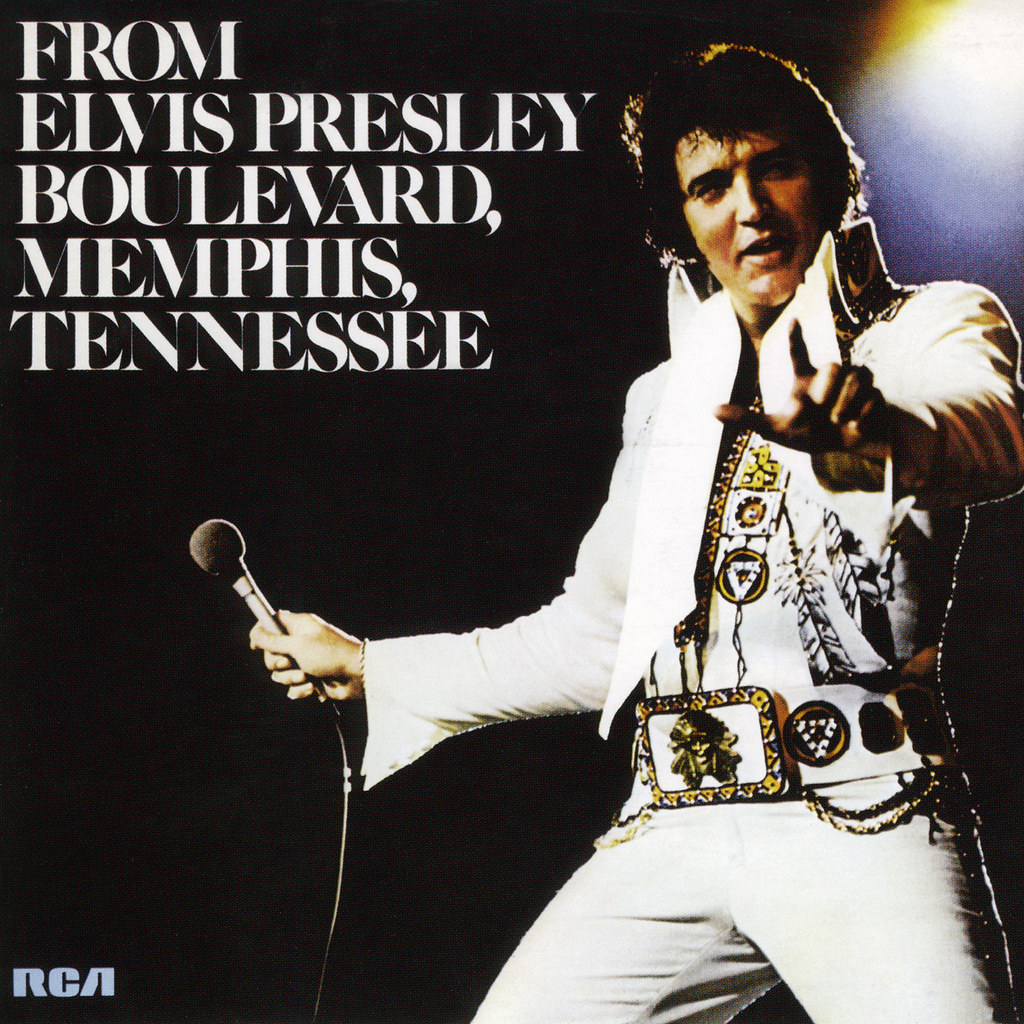
13. **Military Service and Mother’s Tragic Death (1958)**The high-speed trajectory of Elvis’s career took an unexpected and profound turn with his induction into military service. Despite receiving a deferment to complete his forthcoming film *King Creole*, the inevitable arrived. On March 24, 1958, Elvis Presley was drafted into the United States Army at Fort Chaffee in Arkansas, an event that became a global media spectacle. Hundreds of people swarmed to witness his arrival, with photographers documenting every step as he announced his readiness for service, stating he wished “not to be treated any differently from anyone else.”
This commitment to serving his country, rather than using his celebrity to avoid duty, was a powerful statement that resonated deeply with the American public, even as it paused the relentless forward motion of his entertainment career. Between March 28 and September 17, 1958, Presley completed his basic and advanced training at Fort Hood, Texas, where he was temporarily assigned to Company A, 2d Medium Tank Battalion, 37th Armor, proving his dedication to the uniform.
During a two-week leave between his training phases in early June, Elvis still managed to record five songs in Nashville, a testament to his ingrained drive and passion for music, a true artist who couldn’t stay away from the recording ‘studio’ for long. However, this period of professional duty was tragically intertwined with immense personal grief. In early August, his beloved mother, Gladys, was diagnosed with hepatitis, and her condition rapidly deteriorated.
Presley was granted emergency leave and rushed to Memphis, arriving on August 12. Just two days later, Gladys Love Presley passed away at the age of 46 from heart failure. Elvis was utterly devastated; their relationship had been exceptionally close, enduring into his adulthood with private endearments and baby talk. This profound loss was a crushing blow, an emotional ‘engine failure’ that left an indelible mark on his soul, forever changing the man behind the music.
Her death was a pivotal, heartbreaking moment, a somber interlude in the dazzling narrative of the ‘King of Rock and Roll’. It highlighted the deep humanity beneath the iconic stage persona, revealing a man grappling with universal sorrow while simultaneously serving his country. This period, though devoid of the usual stage lights and screaming fans, was arguably one of the most transformative, fundamentally reshaping his personal and professional landscape, an unexpected but inevitable ‘maintenance stop’ in the grand design of his life.
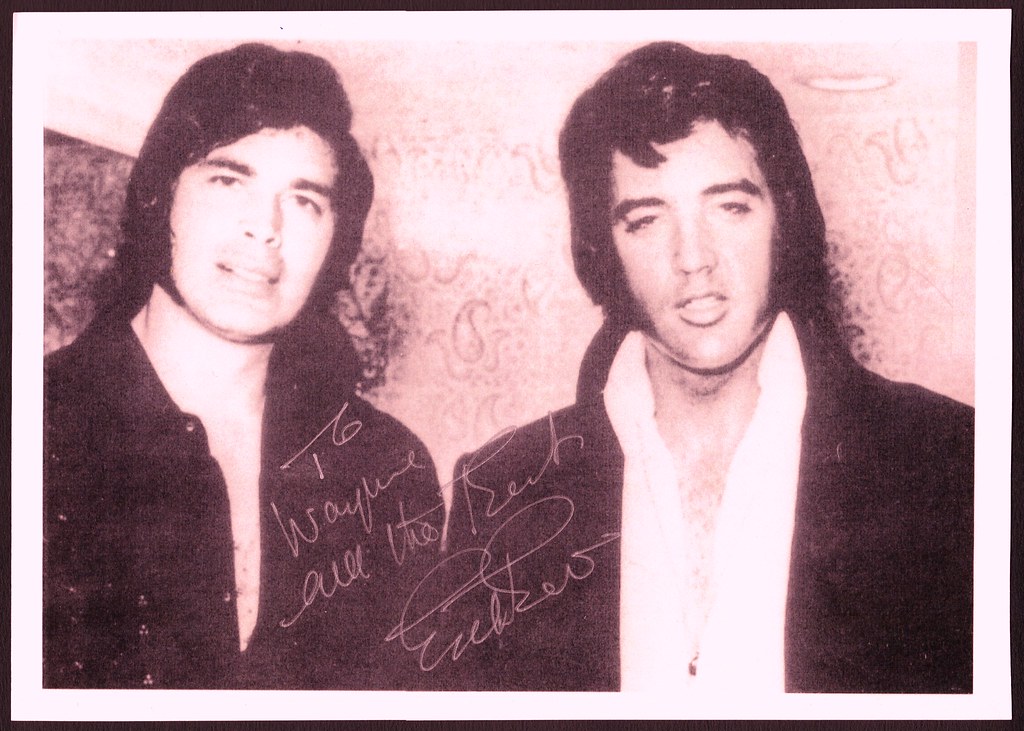
14. **German Deployment, Personal Growth, and New Interests (1958-1960)**Following the profound personal tragedy of his mother’s death and the completion of his training, Elvis was deployed overseas. On October 1, 1958, Presley was assigned to the 1st Medium Tank Battalion, 32d Armor, 3d Armored Division, stationed at Ray Barracks in West Germany. Here, he served as an armor intelligence specialist, a role that continued to demonstrate his commitment to his military obligations and his desire to be treated as an ordinary soldier, not a celebrity.
His time in Germany was not merely a hiatus from his music career but a period of significant personal development and the acquisition of new ‘features.’ He received promotions, first to private first class on November 27, and then to specialist fourth class on June 1, 1959. It was during maneuvers that Presley was first introduced to amphetamines, becoming “practically evangelical about their benefits” not only for energy but also for perceived “strength” and weight loss – a development that would unfortunately have long-term consequences, but at the time was seen as a way to enhance his ‘performance.’
Beyond the military and pharmaceutical influences, Presley also cultivated a lifelong interest in martial arts. He began studying karate with Jürgen Seydel, an interest that would later seamlessly integrate into his dynamic live performances, adding another dimension to his already captivating stage presence, a new ‘skill upgrade’ for his performance arsenal. His fellow soldiers frequently attested to his earnest desire to be seen as an able and ordinary serviceman, rather than the global superstar.
Furthermore, his generosity during this period was remarkable. He famously donated his entire Army pay to charity, purchased television sets for his base, and even bought an extra set of fatigues for every soldier in his outfit. These acts of kindness underscored his grounded nature, demonstrating a deep sense of camaraderie and an appreciation for his fellow servicemen, a true reflection of his ‘character chassis’. On February 11, 1960, he was promoted to sergeant, a fitting recognition of his dedicated service.
It was also during his time in Bad Nauheim, Germany, that 24-year-old Elvis met 14-year-old Priscilla Beaulieu. This encounter marked the beginning of a significant relationship that would lead to their marriage after a seven-and-a-half-year courtship, an important new chapter in his personal life that unfolded against the backdrop of his military service. This period of ‘recalibration’ in Germany, away from the intense media scrutiny of his early career, allowed Elvis to mature, develop new interests, and prepare for his triumphant return to civilian life, his ‘guitar car’ ready for a new era of dominance.
Elvis Presley’s journey was far more than just a musical career; it was a high-octane ride through the heart of 20th-century culture, a meticulously engineered phenomenon that consistently pushed the boundaries of performance and perception. From his initial raw power and groundbreaking sound to his audacious stage presence, his careful navigation of media controversies, and his unwavering commitment to both his art and his country, Elvis forged a legacy that remains unmatched. He was a force of nature, a true innovator whose impact on music, film, and society continues to reverberate, proving that his ‘guitar car’ wasn’t just a vehicle for transportation, but a finely tuned, powerful machine that reshaped the entire landscape of popular entertainment. The King’s reign, solidified through these foundational years, became an enduring testament to charisma, talent, and an unparalleled drive that continues to inspire generations.

